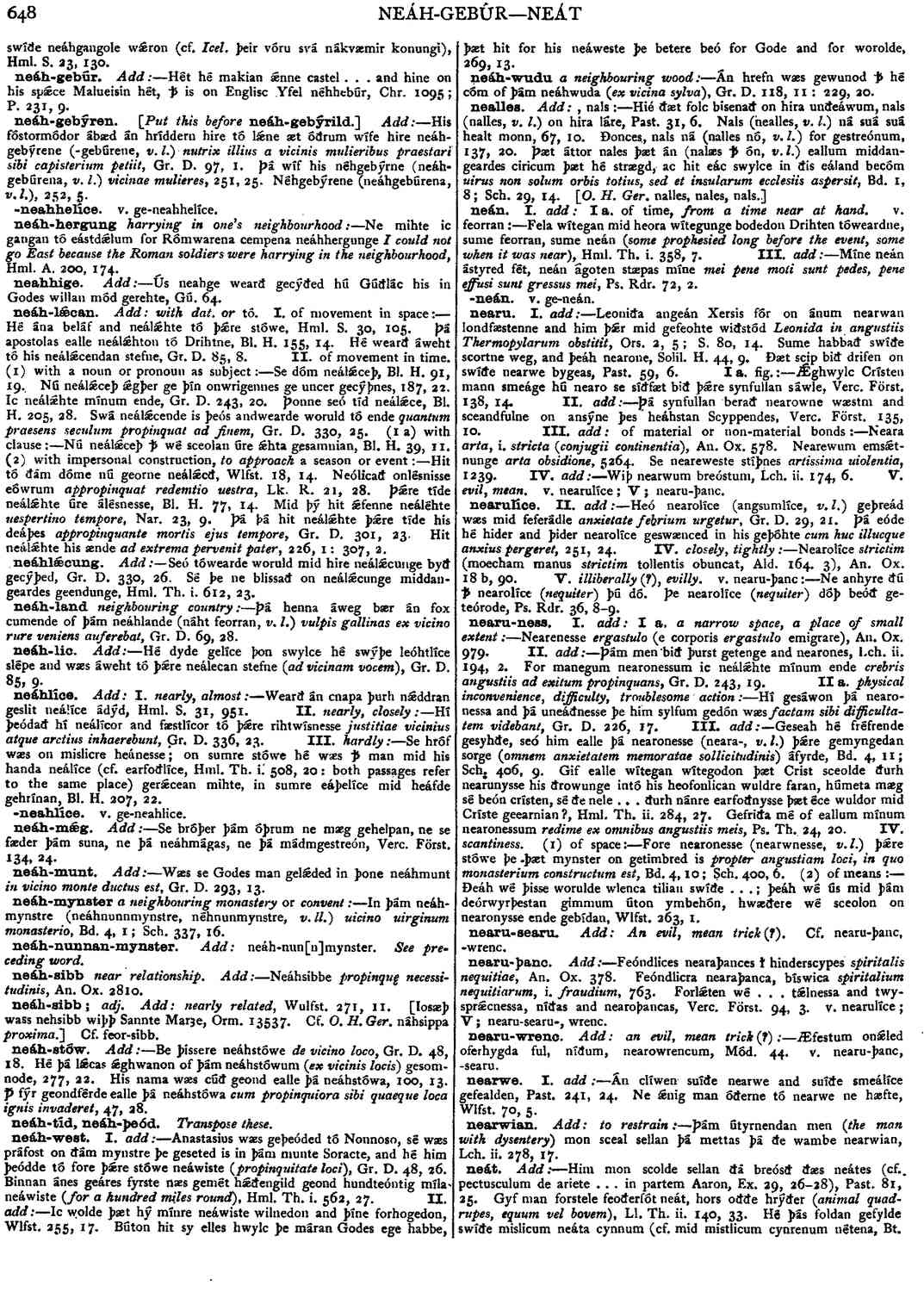neáh-lǽcan
-
Hé ána beláf and neálǽhte tó þǽre stówe,
- Hml. S. 30, 105.
-
Þá apostolas ealle neálǽhton tó Drihtne,
- Bl. H. 155, 14.
-
Hé wearð áweht tó his neálǽcendan stefne,
- Gr. D. 85, 8.
-
Se dóm neálǽceþ,
- Bl. H. 91, 19.
-
Nú neálǽceþ ǽgþer ge þín onwrigennes ge uncer gecýþnes,
- 187, 22.
-
Ic neálǽhte mínum ende,
- Gr. D. 243, 20.
-
Þonne seó tíd neálǽce,
- Bl. H. 205, 28.
-
Swá neálǽcende is þeós andwearde woruld tó ende
quantum praesens seculum propinqvat ad finem,
- Gr. D. 330, 25, (la) with clause :-- Nú
-
Hit tó ðám dóme nú georne neálǽcð,
- Wlfst. 18, 14.
-
Neólicað onlésnisse eówrum
appropinguat redemtio uestra,
- Lk. R. 21, 28.
-
Þǽre tíde neálǽhte fire álésnesse,
- Bl. H. 77, 14.
-
Mid þý hit ǽfenne neáléhte
uespertino tempore,
- Nar. 23, 9.
-
Þá þá hit neálǽhte þǽre tíde his deáþes
appropinquante mortis ejus tempore,
- Gr. D. 301, 33.
-
Hit neálǽhte his ænde
ad extrema pervenit pater,
- 226, l: 307, 2.
Bosworth, Joseph. “neáh-lǽcan.” In An Anglo-Saxon Dictionary Online, edited by Thomas Northcote Toller, Christ Sean, and Ondřej Tichy. Prague: Faculty of Arts, Charles University, 2014. https://bosworthtoller.com/55810.
Checked: 0